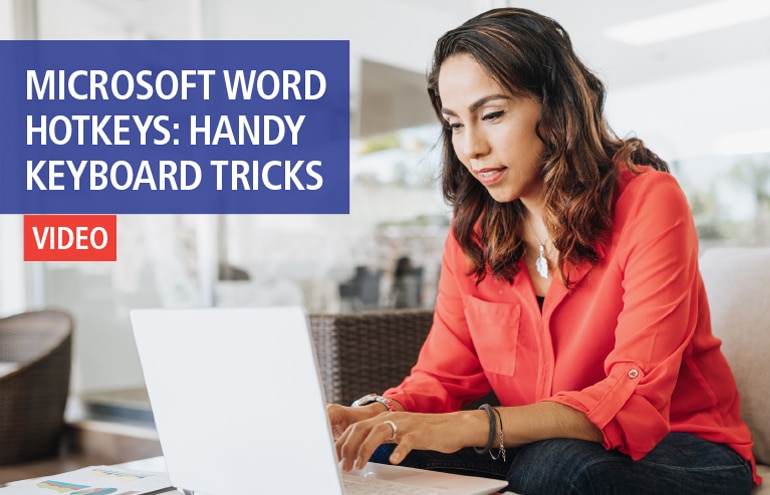Most business communications have one objective: to obtain a response. Focus on communicating better to increase your odds of a quick and meaningful reply.

Table of contents
Lawyers spend a lot of time communicating to get work done. We communicate with clients, colleagues and each other. This communication occurs in virtual or in-person meetings; phone calls; and over email, chat or text. Communicating consumes a lot of our day.
Interestingly, most of our communications have one objective: to obtain a response. A response allows us to get on with our work. Thus, the goal is to find ways to increase the likelihood of a quick and meaningful response. Here are some suggestions to make that happen.
Prioritize Clarity Over Convenience
Communicating with colleagues and clients is the most important thing we do. Unfortunately, communication is hard. Mixing in distributed work environments and globalization makes it all the harder.
Email is a terrific communication tool that facilitates work when used properly. Unfortunately, email is often overused, and in ways that make communication inefficient and arduous. There are several additional communication methods available, each with its specific value. Meetings, videoconferences, calls and texts or chats are the most common email alternatives.
Below is a quick reference table that shows the best communication method for each message need or type.
| Need | Meet/Video | Call | Text/Chat | |
|---|---|---|---|---|
| Collaborate, Create | X | X | ||
| Disseminate, Direct | X | X | X | |
| Add to Historical Record | X | ~ | ||
| Ask/Answer Short Question | X |
Using the right tool for the job is the best way to improve the likelihood of achieving our goal — a quick and meaningful response.
Less Is More
Everyone is busy. Everyone is under pressure. Everyone gets too many calls, emails, texts and chats. It’s no one’s fault. It’s just the reality in which we work. So, how can we make our communications more effective?
The email app company Boomerang studied 40 million emails. It found that shorter words and shorter sentences produced a 36% better response rate. The study went on to state that emails containing between 50 and 100 words garnered a 50% better response rate than longer emails.
Shorter, simpler messages get better responses. Fine-tune this suggestion by keeping sentences between 17 and 19 words long. Punchy sentences are easier to digest, while long sentences can be difficult to follow.
This applies to other forms of communication, too. Cogent texts, chats or posts will garner quicker responses. Prepared bullet lists for in-person or virtual meetings will also get more done sooner.
The key to making things shorter is to slow down at the start.
Consider what needs to be communicated. Include only the pertinent information. Count words in sentences and restructure them when necessary. It’s an easy fix that achieves the main goal of getting meaningful responses back quickly.
Conclude, Support, Explain
Use the Conclude, Support, Explain structure for all communications. Anyone who has met with a busy client (or lawyer) knows they focus on what you need. They also ask why you need it if they don’t already know. So, deliver the request in a structure most likely to garner a quick response. Specifically:
- Conclude: Start with what you need or want from the recipient. Do you need approval? Do you need information? Do you need guidance? Starting with the conclusion quickly and clearly establishes the purpose of the communication.
- Support: Why do you need what you need? Short, even bullet-pointed, explanations of what you need give the recipient the reasons for your request.
- Explain: Add background or additional information if it’s helpful to the request. There’s nothing wrong with providing a deeper explanation. Simply put it at the end. Doing so minimizes the risk of losing the recipient’s attention before getting the response you seek.
Concise communications can be informative as well as effective. Remember, the goal is to deliver a meaningful message that results in a quick response.
You might also like: “10 Habits for Successful Email Communication” by Mark C. Palmer.
Write Informative Headlines
Email subject lines, meeting agenda titles, and the first lines of texts and chats are the first piece of information a reader sees in the communication. However, this space is rarely used effectively. Use headline-style subject lines to grab the reader’s attention.
Here are some examples of vague versus informative headlines:
Vague Headlines
- Question
- Tomorrow’s Meeting
- Need Information
Informative Headlines
- Thompson Matter — Okay to File Attached Response?
- Robertson Deal — Need Client Contact Information
- Smith v. Jones Strategy Meeting — Tomorrow 2pm Eastern — 12 North
Vague headlines tell the reader little. Informative headlines communicate purpose and elicit quicker responses. They’re more effective and more efficient.
Communicating Better
Communicating is a big part of our work. Finding ways to do it better speeds up productivity and helps us feel more engaged. Try one or more of the suggested practices above to see if helps you communicate more efficiently and effectively.
Editor’s Note: This article is part of a series produced by Paul Burton for Attorney at Work. Watch for upcoming posts and read all of Paul’s past articles here — and be sure to subscribe to our newsletter so you don’t miss a thing.

Sign up for Attorney at Work’s daily practice tips newsletter here and subscribe to our podcast, Attorney at Work Today.
















